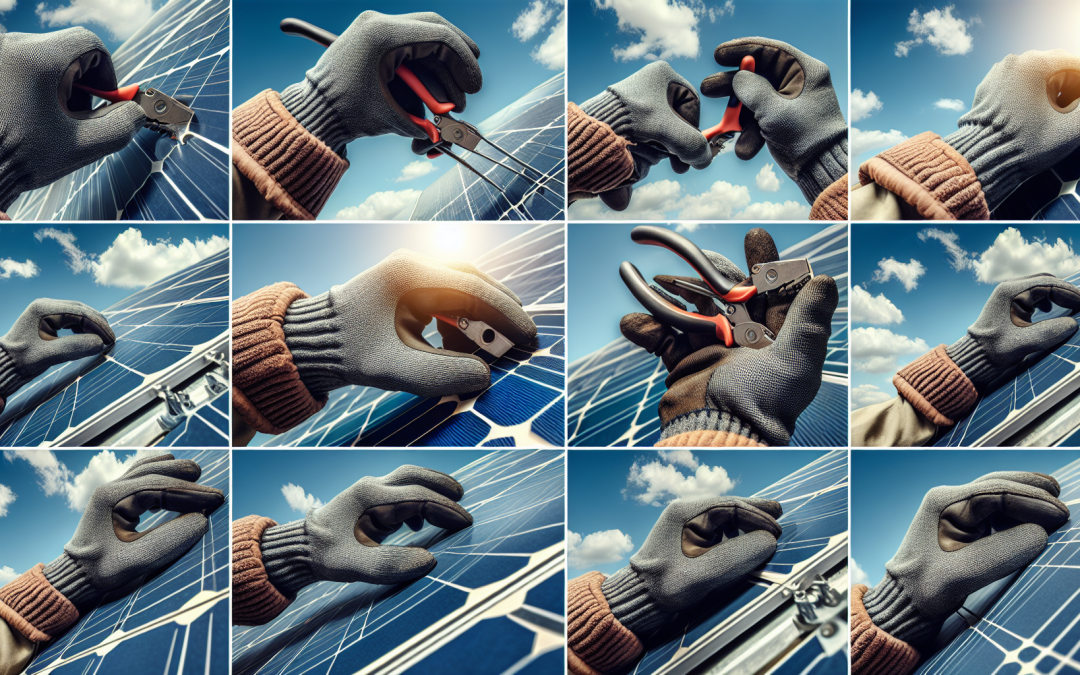So you’ve decided it’s time to decommission your solar panel system, but you’re not sure what exactly that entails. Well, fear not, because we’re here to break it down for you. In this article, we’ll walk you through the step-by-step process of decommissioning a solar panel system, from disconnecting the panels to properly disposing of the equipment. Whether you’re looking to upgrade your system or simply move on from solar energy, understanding the decommissioning process is crucial to ensuring a smooth and environmentally responsible transition. So let’s get started!
Preparation for Decommissioning
Decommissioning a solar panel system requires careful planning and preparation to ensure a smooth and efficient process. Before starting the decommissioning process, there are several important factors to consider.
Evaluation of System Performance
The first step in preparing for the decommissioning process is to evaluate the performance of the existing solar panel system. This evaluation helps determine the overall condition of the system, including the efficiency of individual panels and components. By assessing the system’s performance, you can identify any issues or areas that may need special attention during the decommissioning process.
Assessment of Financial Viability
Another crucial aspect of preparation for decommissioning is assessing the financial viability of the project. This evaluation involves analyzing the costs and benefits associated with decommissioning the solar panel system. By conducting a comprehensive financial assessment, you can determine if decommissioning is economically feasible and identify any potential financial risks or challenges that may arise.
Environmental and Safety Considerations
It is essential to consider environmental and safety factors when planning for the decommissioning process. This includes evaluating the potential environmental impact of the system’s removal and ensuring compliance with safety regulations and guidelines. Taking these considerations into account helps mitigate any adverse effects on the environment and ensures the safety of workers involved in the decommissioning process.
Legal and Regulatory Obligations
When decommissioning a solar panel system, there are several legal and regulatory obligations that must be fulfilled. These obligations are important to ensure compliance with local regulations and to obtain necessary permits for the decommissioning process.
Compliance with Local Regulations
The first step in meeting legal obligations is to ensure compliance with local regulations regarding the decommissioning of solar panel systems. This involves familiarizing yourself with local laws and regulations related to renewable energy systems and understanding the specific requirements for decommissioning.
Obtaining Necessary Permits
In many jurisdictions, obtaining permits is a mandatory requirement for decommissioning a solar panel system. These permits typically involve providing detailed information about the system, the planned decommissioning process, and the disposal of components. It is crucial to research and obtain all necessary permits before proceeding with the decommissioning process.
Notification to Relevant Authorities
In addition to obtaining permits, it may be necessary to notify relevant authorities about the decommissioning process. This notification ensures that governmental bodies or regulatory agencies are aware of the project and can provide any necessary oversight or guidance. It is important to follow any notification requirements specified by local regulations.
Disconnecting the System
Disconnecting the solar panel system is a critical step in the decommissioning process. It involves shutting down the system, disconnecting electrical components, and implementing safety measures.
Power Off
The first step in disconnecting the system is to power it off. This involves shutting down the solar inverters and disconnecting any power sources. Properly powering off the system is essential for the safety of workers and the successful disconnection of electrical components.
Disconnecting Electrical Components
After the system has been powered off, the next step is to disconnect the electrical components. This includes disconnecting the wiring, cables, and any other connections associated with the solar panels and inverters. It is crucial to follow proper electrical safety procedures during this step to prevent any accidents or damage.
Shutting Down Inverter
The inverter is a key component of a solar panel system, and it must be shut down properly during the decommissioning process. This involves following the manufacturer’s instructions and guidelines for safely shutting down the inverter. Failure to do so could result in damage to the inverter or pose a safety risk.
System Isolation
Once all electrical components have been disconnected, it is important to isolate the entire system. This means securing any loose wiring or cables and ensuring that the system is no longer connected to the electrical grid. By properly isolating the system, you can minimize any potential hazards and prevent accidental power generation.
Safety Measures
Throughout the disconnecting process, it is crucial to implement appropriate safety measures. This includes wearing protective gear, using proper tools and equipment, and following safety protocols. Adhering to safety guidelines helps ensure the well-being of all individuals involved in the decommissioning process.
Removal of Solar Panels
After disconnecting the system, the next step in the decommissioning process is to remove the solar panels themselves. This involves assessing the panel condition, taking safety precautions, and employing proper removal techniques.
Assessing Panel Condition
Before removing the solar panels, it is important to assess their condition. This involves inspecting each panel for any signs of damage, degradation, or wear. By evaluating the panel condition, you can determine the appropriate removal technique and identify any potential hazards.
Safety Precautions
During the removal process, it is crucial to take safety precautions to prevent accidents or injuries. This includes using personal protective equipment, such as gloves and safety glasses, and ensuring a safe working environment. Additionally, considering factors such as weather conditions and panel stability is vital to ensure safe and efficient removal.
Disconnecting Panels
Disconnecting the solar panels from their mounting systems and electrical connections is the next step in the removal process. This requires carefully following manufacturer guidelines and instructions for dismantling the panels. Following proper procedures ensures that the panels are disconnected safely and minimizes the risk of damage.
Removal Techniques
The choice of removal technique depends on various factors, including the type of mounting system and the accessibility of the panels. Common removal techniques include crane lifting, manual disassembly, or using specialized tools designed specifically for solar panel removal. Selecting the most suitable technique for your specific situation ensures efficient and safe removal.
Transportation and Storage
Once the panels have been removed, they need to be properly transported and stored. This involves packaging the panels securely to prevent damage during transportation and choosing appropriate storage facilities to protect them from environmental elements. Proper transportation and storage measures help maintain the integrity of the panels and ensure their usability in the future, whether for recycling, resale, or other purposes.
Disposal of Components
Proper disposal of the decommissioned solar panel system components is crucial for environmental and safety reasons. This involves segregating materials, considering recycling options, donation or resale possibilities, and following proper waste management practices.









